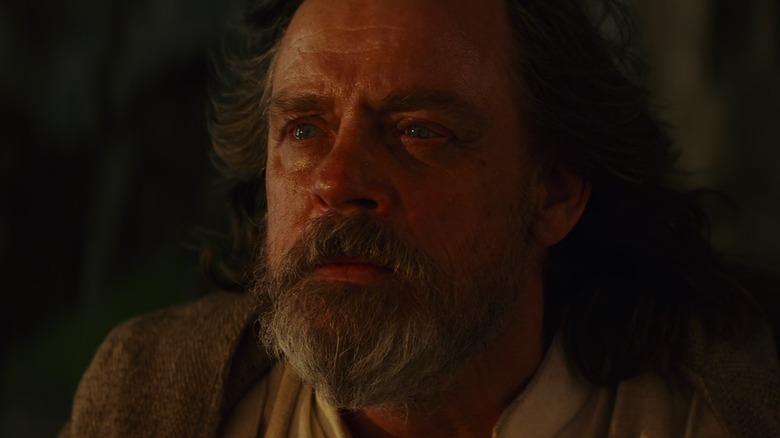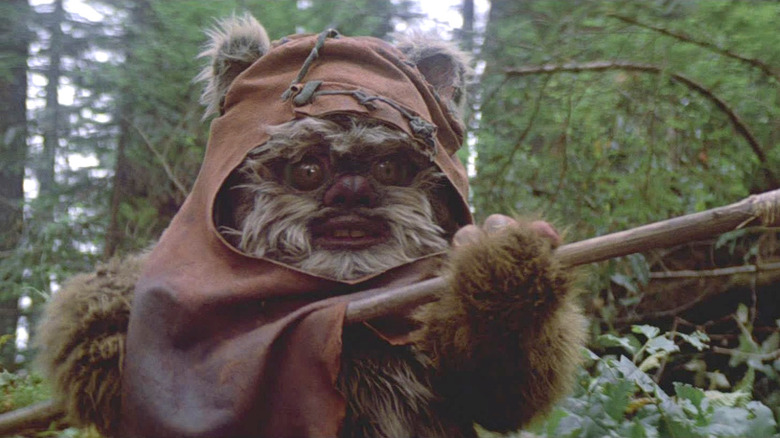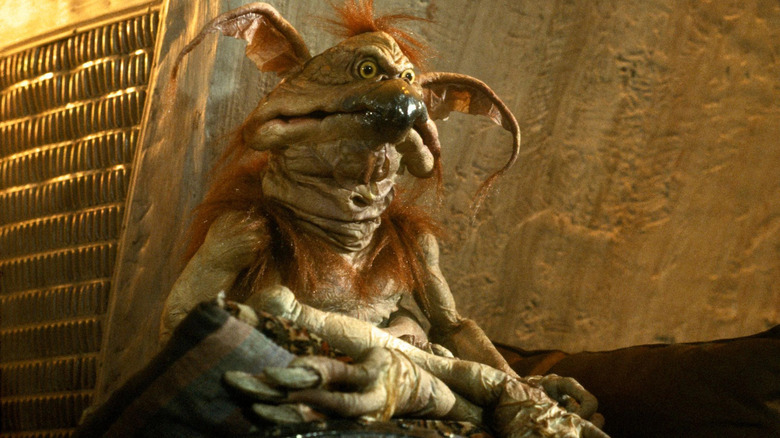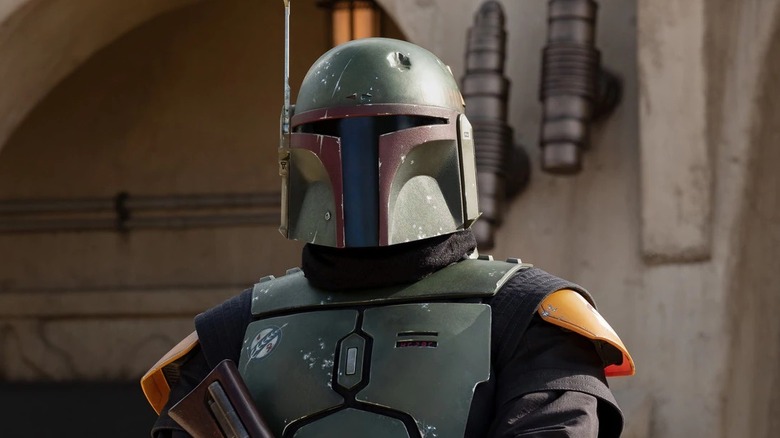This Star Wars Species Is Never Actually Named In The Skywalker Saga
George Lucas, the director of the 1977 sci-fi yarn "Star Wars," once made what turned out to be a savvy business decision. While the world was gearing up for his magical fantasy film, inspired directly by the action/adventure serials of Lucas' youth, Lucas asked 20th Century Fox if he could retain what was called "the garbage rights" to "Star Wars." "Garbage" was Hollywood parlance for the ancillary tie-in nonsense — toys, lunchboxes, other merchandise — that studios would sometimes produce in order to make a few bucks on the side. Such merchandising was seen to be a waste of time as the energy needed to make the merch wasn't worth the trivial amount of money that could be made from it.
"Star Wars" changed the game entirely. The film was such an enormous success, that what few toys had been made sold out immediately. Demand for new toys was so high that 20th Century Fox had to resort to selling empty "collector's boxes" to fans that they may fill them later with toys that had not yet been made (per Den of Geek). Those toys sold like hotcakes.
From that point on, toy manufacture became inextricably linked with "Star Wars," and most major blockbusters followed suit, ensuring that there would be enough potential merch for any potential hit. By the time "Return of the Jedi" was released in 1983, the "Star Wars" merchandising factory was in full swing, and children could now buy toys, costumes, books, read-along records, t-shirts, and Ewoks, Ewoks, Ewoks.
Which brings us to an interesting piece of trivia about "Return of the Jedi." The word "Ewok" is never spoken.
Ewoks are never called Ewoks
Ewoks were a species of teddy bear-looking aliens that lived in trees, and who were convinced by Luke Skywalker (Mark Hamill) and his retinue that they should team up to fight the encroaching death machines of the evil Galactic Empire. Although referred to as Ewoks in the credits of "Return of the Jedi," the species Luke encounters is never named on camera. The film to follow "Return of the Jedi" was called "Caravan of Courage: An Ewok Adventure," and there were plenty of toys besides to cement the word "Ewok" (itself derived from the Miwok tribe, with land in what is now northern California) into the mass consciousness.
At the time "Return of the Jedi" was released, Ewoks were derided as evidence of George Lucas selling out. The Ewoks, so cute and cuddly, seemed to have been designed to be toyetic, and the subsequent merchandise played that out. Ewoks were seen by some as an inorganic part of the film series, and they were includes solely for reasons of merchandising. The Ewoks would be centrally featured in "Caravan," "The Battle for Endor," (1985), and their own animated series which ran for two seasons in '85 and '86. It's curious to ponder that they are never named when introduced.
But this has played out extensively throughout "Star Wars" history, with "Return of the Jedi" being the most extensive example: Most of the on-screen characters in the "Star Wars" films aren't named, and "Star Wars" fans refer to them by what was printed on a toy package. More enterprising fans might have found copies of the "Star Wars" shooting scripts and gleaned names from them, but when it comes to on-screen information, none of these people are named.
Lak Sivrak and the power of the expanded universe
The above picture is of a character named Salacious B. Crumb, a cackling Gremlin that sat at the right hand of Jabba the Hutt. No one in "Return of the Jedi" refers to Salacious B. Crumb by name, however. The same is true of background characters like Lak Sivrak, Ponda Baba, Max Rebo, Hem Dazon, Sy Snootles, Kardue'sai'Malloc, Fromp Ghoulghoul, and Bix Beiderbecke. One of those I made up, and other was a famous jazz musician.
The reason "Star Wars" fans know these names is solely through merchandising. If you liked the design of a background puppet, lo, it had a toy, and lo, that toy had a name. Now Salacious B. Crumb is no mere piece of window dressing, but a fully realized character. The names of these unnamed "Star Wars" background characters were key in allowing the fan community to project backstories onto them. To this day, you can look up Salacious B. Crumb on the fan site called (sigh) Wookieepedia, and find the character's full biography. It turns out Mr. Crumb is a Kowakian monkey-lizard.
This is the way (of toys, merchandise, and mythos)
This ancillary information reveals the unique — and some would say insidious — way that "Star Wars" fans relate to their object of affection. And important part of consuming "Star Wars" movies is to also consume "Star Wars" merchandise. More so than any other commercial film property, "Star Wars" communicates through supplemental material, footnotes, ancillary narratives, and press releases. Most characters don't have names in "Star Wars" movies, but they do have names on boxes and packages, making the corporate branding just as important as the shooting script. This isn't unique to "Return of the Jedi," either, as some may recall that, prior to the release of 2019's "Star Wars: The Rise of Skywalker," a vital plot detail was revealed in an event on the online video game "Fortnite."
Obsessing about details is a common feature of media fandom, of course, and those residing in its deeper trenches know about fanfic, fan art, and fan theories. But thanks to marketing and naming-characters-after-the-fact, "Star Wars" fans are invited to place a great deal of importance on a minor character from a single film they have watched dozens of times. Because of the named printed on a toy package, authors of tie-in books can expand them. Named characters, however small their roles, are expanded by marketing into myth. As such, we now have a TV series devoted to a minor "Star Wars" character called Boba Fett.
This is the way.
Now to research the name of Yoda's species ...



